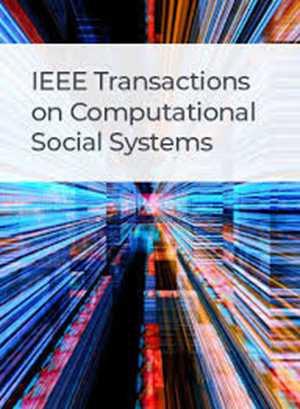A Headline-Centric Graph-Based Dual Context Matching Approach for Incongruent News Detection
IF 4.5
2区 计算机科学
Q1 COMPUTER SCIENCE, CYBERNETICS
IEEE Transactions on Computational Social Systems
Pub Date : 2024-04-26
DOI:10.1109/TCSS.2024.3384698
引用次数: 0
Abstract
The prevalence of incongruent news has demonstrated its significant role in propagating fake news, which catalyzes the dissemination of both misinformation and disinformation. Consequently, detecting incongruent news articles is an important research problem to counter early spreading of misinformation. In the literature, researchers have explored various bag-of-word-based features, news body-centric and news headline-centric encoding methods for incongruent news article detection. However, headline-centric and body-centric approaches in the literature fail to detect partially incongruent articles efficiently. Motivated by the above limitations, this study proposes graph-based dual context matching (GDCM), which first represents headlines and news bodies as a基于标题中心图的不一致新闻检测双语境匹配方法
不一致新闻的盛行表明,它在传播假新闻方面起着重要作用,而假新闻则会催化错误信息和虚假信息的传播。因此,检测不一致的新闻文章是应对早期错误信息传播的一个重要研究课题。在文献中,研究人员探索了各种基于词袋特征、以新闻正文为中心和以新闻标题为中心的编码方法来检测不一致的新闻文章。然而,文献中以标题为中心和以正文为中心的方法无法有效地检测出部分不一致的文章。鉴于上述局限性,本研究提出了基于图的双重上下文匹配(GDCM),首先将标题和新闻正文表示为一个 bigram 网络,以捕捉单词和文档结构之间的上下文关系。对于标题中的每个单词,GDCM 都会从代表新闻正文的 bigram 网络中提取双重语境(正面语境和负面语境),并估算双重语境与标题之间的相似度,从而检测出不一致的新闻。我们在三个公开的基准数据集上进行了广泛的实验,并将其性能与 16 个基准模型进行了比较。实验结果表明,所提出的模型优于现有的最先进模型,并能有效地检测出部分不一致的新闻。我们通过几项消融研究进一步验证了所提模型的性能。从消减研究中可以得出以下主要结论:1)从新闻正文的不同片段中提取标题中单词的双重大语义上下文,然后估计新闻正文和标题中双重大语义上下文之间的相似性,这有助于不一致新闻的检测,也有助于高效检测部分不一致新闻;2)基于大语义上下文以网络形式表示新闻标题和正文,有助于更好地捕捉标题和正文之间的非线性和上下文关系。
本文章由计算机程序翻译,如有差异,请以英文原文为准。
求助全文
约1分钟内获得全文
求助全文
来源期刊

IEEE Transactions on Computational Social Systems
Social Sciences-Social Sciences (miscellaneous)
CiteScore
10.00
自引率
20.00%
发文量
316
期刊介绍:
IEEE Transactions on Computational Social Systems focuses on such topics as modeling, simulation, analysis and understanding of social systems from the quantitative and/or computational perspective. "Systems" include man-man, man-machine and machine-machine organizations and adversarial situations as well as social media structures and their dynamics. More specifically, the proposed transactions publishes articles on modeling the dynamics of social systems, methodologies for incorporating and representing socio-cultural and behavioral aspects in computational modeling, analysis of social system behavior and structure, and paradigms for social systems modeling and simulation. The journal also features articles on social network dynamics, social intelligence and cognition, social systems design and architectures, socio-cultural modeling and representation, and computational behavior modeling, and their applications.
 求助内容:
求助内容: 应助结果提醒方式:
应助结果提醒方式:


